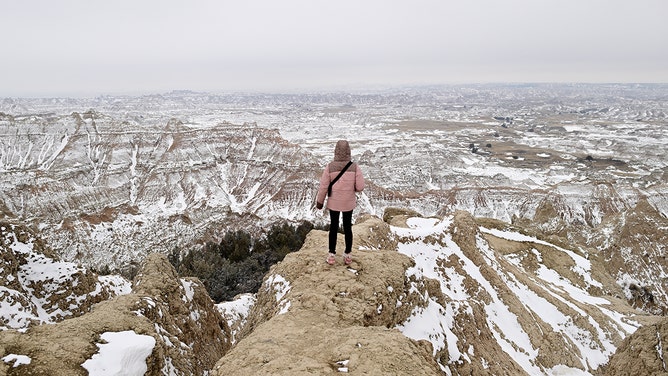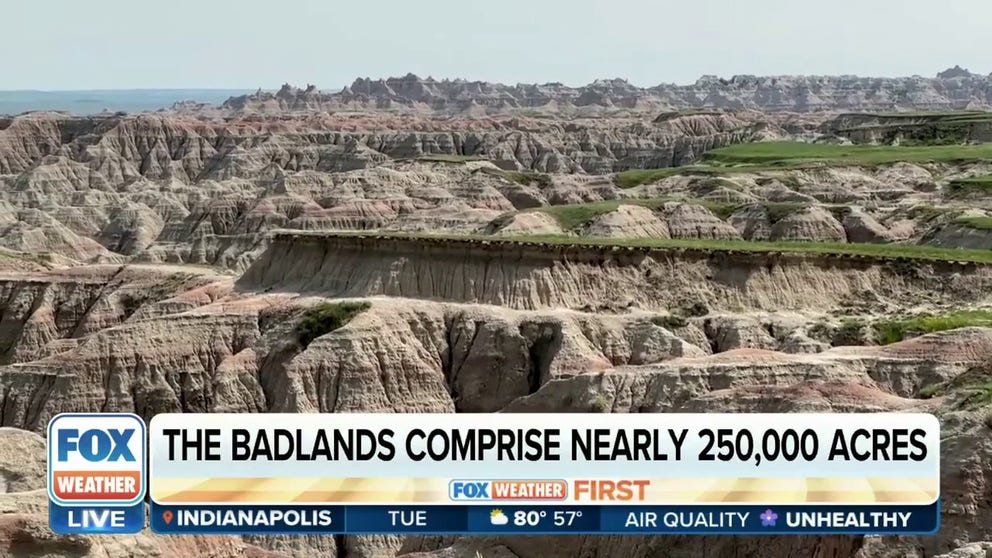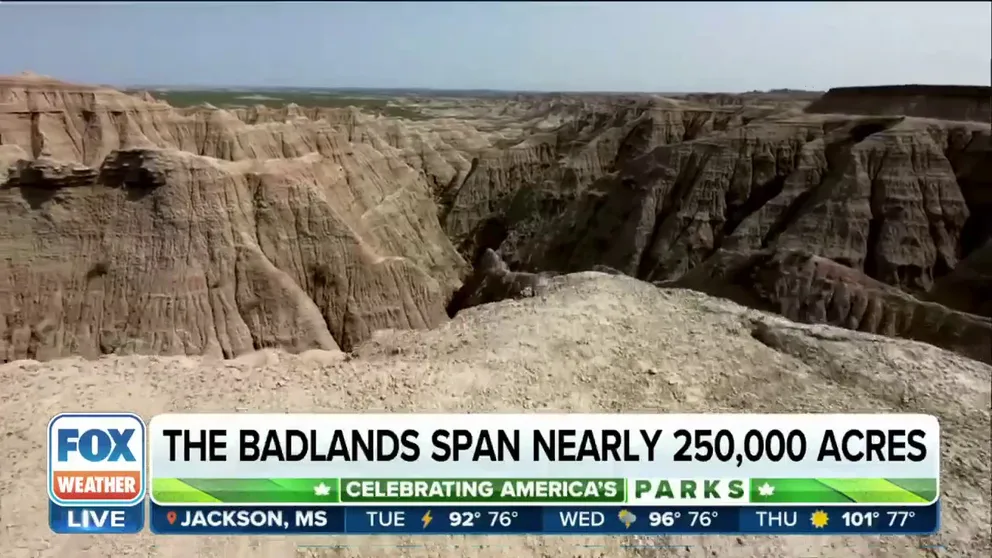Weather shaped Badlands over millions of years resulting in other-worldy landscape
Mako Sica translates to "bad lands," a name given by the Lakota people for the rocky terrain, lack of water and extreme temperatures across the complex 250,000-acre park.
Exploring the Badlands of South Dakota and its history
FOX Weather's Robert Ray explores the Badlands of South Dakota and its Mars-like landscape and fossils caused by weather over millions of years.
BADLANDS, South Dakota – It might feel like an alien world to visit Badlands National Park in South Dakota, with an expansive landscape not found anywhere else on Earth.
Mako Sica translates to "bad lands," a name given by the Lakota people for the rocky terrain, lack of water and extreme temperatures across the complex 250,000-acre park.
Native American people and their culture have been deeply rooted within the Badlands for 12,000 years. The Lakota people have called the Badlands home for the last several hundred years.
YELLOWSTONE’S HISTORIC FLOODS 1 YEAR LATER: TOURISTS RETURN AND REBUILD CONTINUES
At one point, the Badlands was covered by a shallow sea. When the water started receding 75 million years ago, the sediments of sand, clay and silt left behind formed the spires and steep canyons.

A girl observes Badlands National Park on March 21, 2023, in Interior, South Dakota. A rare spring snow fell on the central part of the state this morning.
(Mark Makela / Getty Images)
"The Badlands is a stack of sedimentary rocks that have piled on the – right about (in) the middle of the age of mammals halfway between you and T-Rex … now all these layers are being carved away by erosion," said Ed Walsh, with Badlands National Park.
The sediment contains fossils from a world that no longer exists. Visitors can see some of the fossils from previous finds in the park, including sea creatures, mammals, birds and reptiles.
Visitors have also stumbled upon some finds.
FOX Weather's Robert Ray journeys through the Badlands of South Dakota
FOX Weather's Robert Ray explores the Badlands of South Dakota and its Mars-like landscape and fossils caused by weather over millions of years.
Jerry Woehr was visiting the park with his family and was prepared for the other-worldly experience.
"We were told that maybe it would look like another planet, and we were talking with the kids, ‘We’re like it almost was like going out onto Mars or something like that,'" Woehr said. "Though they were quick to point out there was a lot more grass than there would be at Mars, so that analogy didn't work."
The National Park is still undergoing a transformation from harsh weather – but very slowly. Erosion continues at the rate of about an inch per year.

